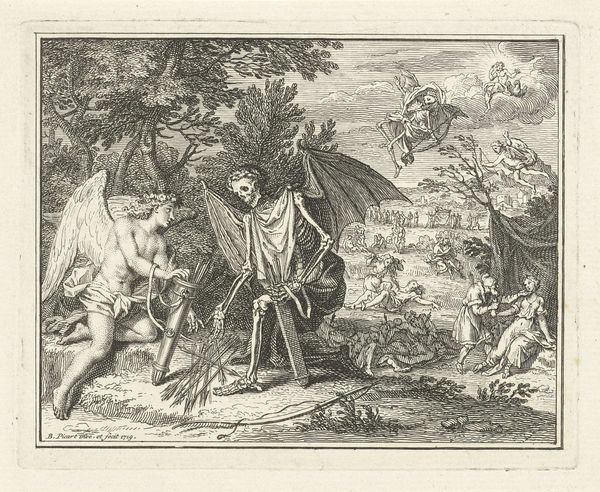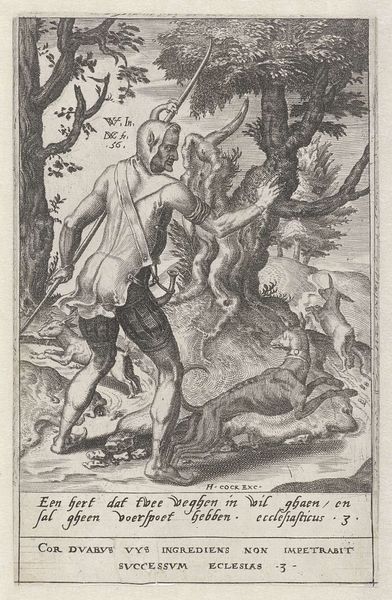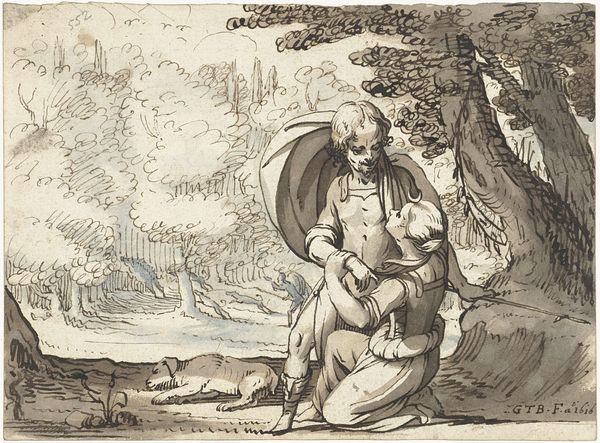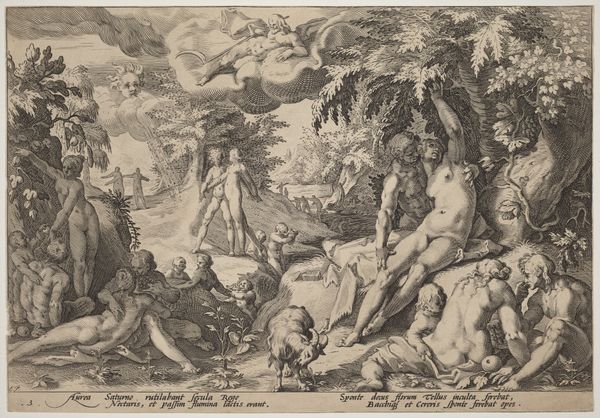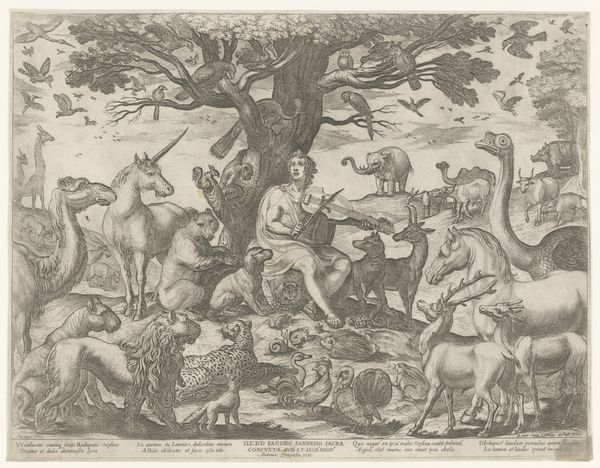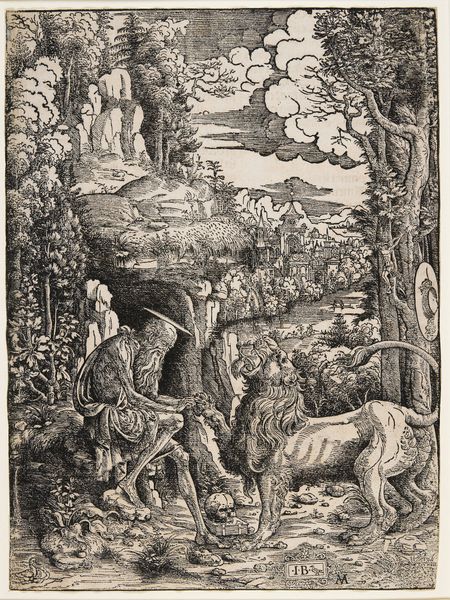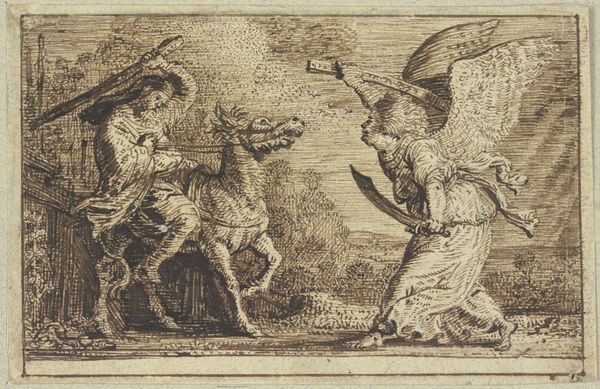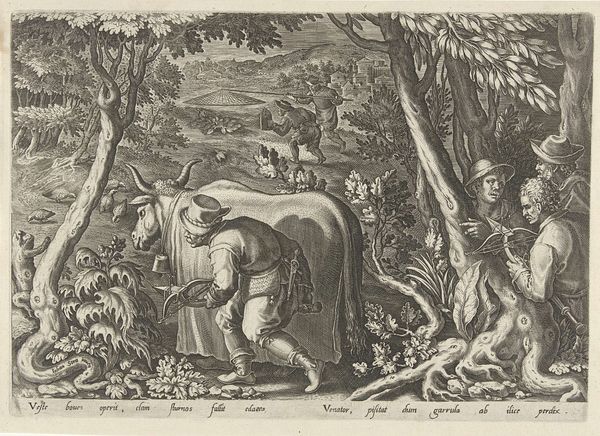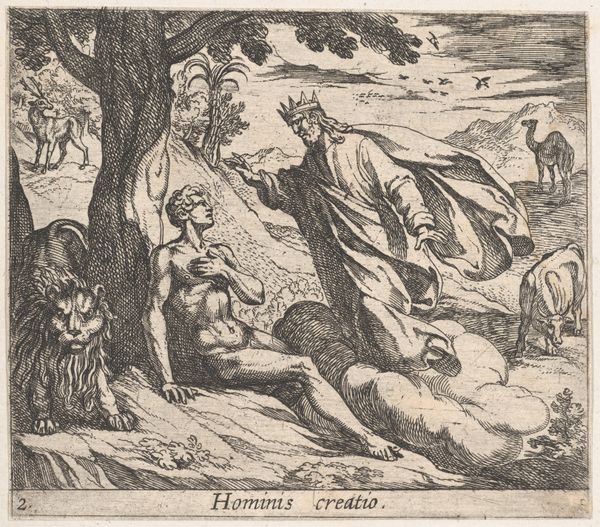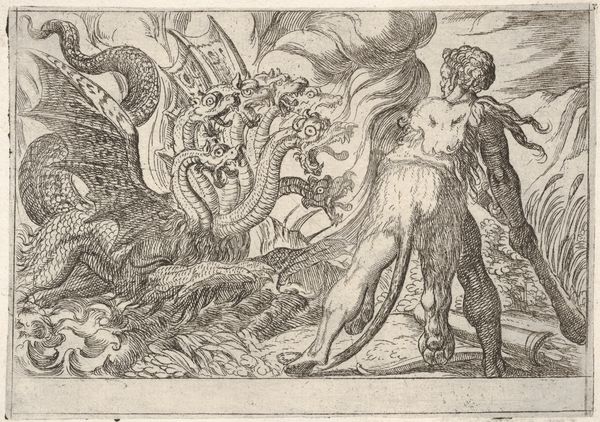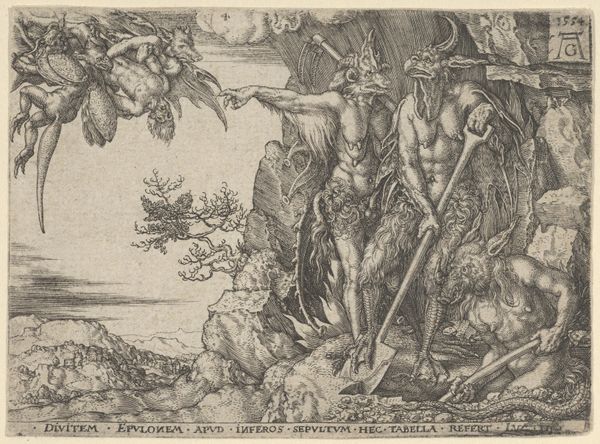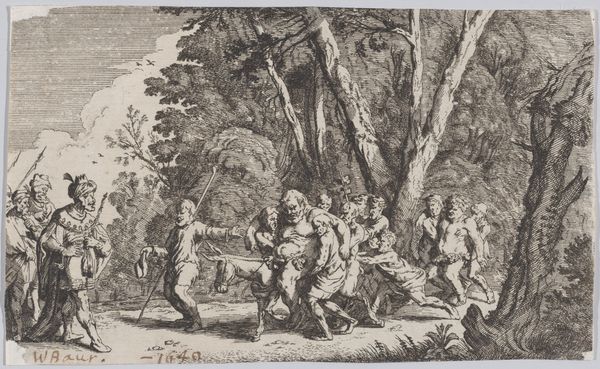
drawing, ink, engraving
#
drawing
#
allegory
#
baroque
#
french
#
death
#
charcoal drawing
#
ink
#
cupid
#
pencil drawing
#
line
#
history-painting
#
charcoal
#
engraving
Copyright: Public Domain
Curator: Editor: This is Bernard Picart's "Cupid and Death," created around 1718. The medium seems to be ink and engraving. It feels chaotic, yet deliberately arranged. What do you see in this piece, especially concerning its materiality? Curator: Well, consider the engraving process. Think of the labor involved in meticulously carving those lines into a metal plate. The lines create both the image and imply social commentary. Notice the stark contrast of Death and Cupid – one usually takes life, the other is related to pleasure and creation of life, but their arrows are jumbled. Editor: It's almost like a factory churning out engravings, each one a mirror of the last, disseminating the artist's statement widely. So, the mechanical nature is part of the statement itself? Curator: Exactly! The reproducibility undermines the idea of a unique, precious artwork, and questions where true artistic value resides, either in the physical labor, the ideas portrayed or even perhaps in its social accessibility and distribution to consumers. The materials – ink, paper, metal – are just vehicles, each playing its own unique role in production of this piece of social commentary. Does this piece comment on how "easily available" love or death became? Or is it something else entirely? Editor: It's fascinating how the mass production aspect actually amplifies the artist's message instead of diluting it. I hadn’t thought about it in terms of commentary on both creation and death as consumable commodities. Curator: Considering the Baroque style, notice the allegory being materialized. Death, normally grand and fearsome, appears almost comedic due to the mix-up. Even the concept of love seems to be critiqued. Editor: I'll never look at an engraving the same way again. It's more than just a picture; it is, you're right, a process made manifest. Curator: And understanding that process gives us deeper insight. That's materiality at work.
Comments
No comments
Be the first to comment and join the conversation on the ultimate creative platform.
